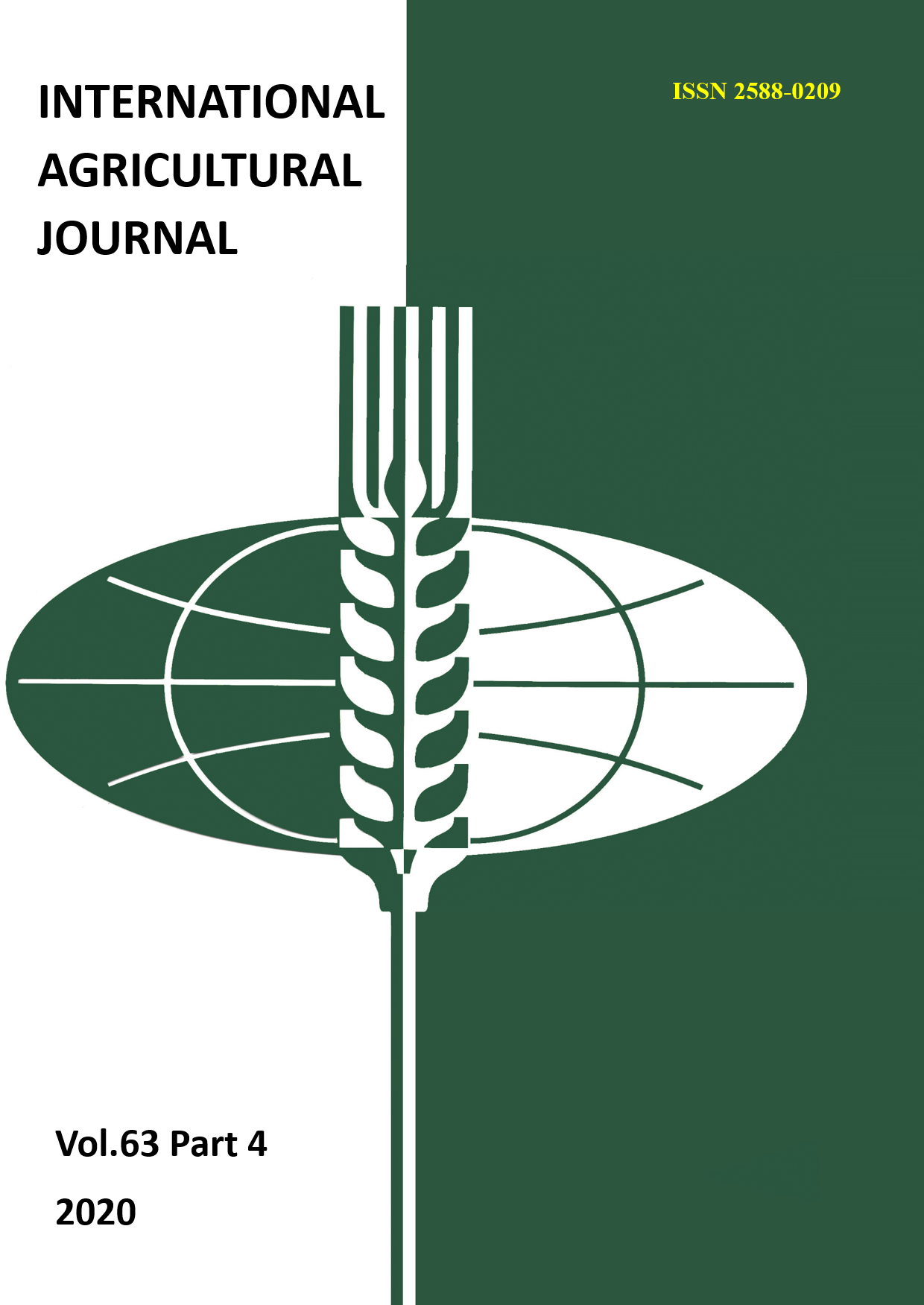IN INTENSIVE AND ADAPTIVE FEED CROPE CONTRASTS IN THE CONDITIONS OF NORTHERN AGRICULTUREПриведены данные исследования продуктивности озимой ржи в звене севооборотов. Экспериментальные работы изучались на научно-производственных стационарах «Холбуйа» (1986
Main Article Content
Abstract
The data of the study of the productivity of winter rye in the head of crop rotations are given. Experimental works were studied at the Research and Production Hospitals of Holbuyah (1986-1989) and Ilgelaech (1996-1999) of The Hangalas Ulus. In The conditions of Yakutia, feed crops use the length of the growing season by 50-70%, and spring grains - 85-90%. The underutilized part of the growing season in forage crop rotations can be used to seal crops by intermediate crops. The schemes of fodder crop rotations are as follows: 1. sunflower, winter rye - winter rye, spring rape (slant) - oatmeal-pea-paradise mixture (2 ukosa) - turnips. In this crop rotation, the calculation of fertilizer intake rates was carried out by the planned harvest, taking into account the natural fertility and soil moisture conditions, as well as the rate of use by plants. 2. Donnik - donnik, winter rye - winter rye, oats - rapeseed - Siberian wheatgrass; Fertilizer options are as follows: 1. Control, 2. Mineral fertiliser in a dose - N 235P60 - (estimated dose of fertilizer for the planned harvest), 3. organo-mineral fertiliser - manure60 t/ha (NPK)60. The largest increase in dry matter in crop rotation 1 provided the second field - 4.48 and 4.88 tons per hectare on fertilized variants, the yield of dry matter reached 9.51 tons/ha, the total harvest of green mass on fertilized variants was 56.94 -59.01 t/ha. On this field after sunflower (1 field) sowed winter rye, and after harvesting it sowed rapeseed. This maximum use of the warm period of cryolitozone provided 1 kg of fertiliser from the action of NPK - 18.66 and from the variant NPK manure - 15.79 kg of dry matter. On the permafrost meadow-black-earth salted soils the highest harvest of green mass provided the third field, the total yield of winter rye and oats of the 2nd planting period amounted to 33.0 tons/ha, the collection of feed units up to 5.84 tons/ha. Exchange energy for winter rye is observed 28.7-45.0, on oats - 22.4-38.5 GJ/ha. In crop rotation, the cycle of forage crop development uses the entire reserve of the warm period of the short but hot summer of Central Yakutia.
Article Details
References
2. Popov N., Maksimova Kh., Nikolaeva V, et al (2018) Resursosberegayushie tekhnologii polevogo kormoproizodstva v Yakutii: monographia [Resources saving technologies of field fodder production: monograph] Ministry of Education of Russian Federation, Federal budget organization “Yakut Scientific Research Institute of Agriculture named after M.G. Safronov.”, “Dani-Almas”, pp. 40-49
3. Ivanova L. (2018) Agrolandshaftnoye rayonirovaniye ii agroeko-logitcheskaya gruppirovka zemel’ srednetaezhnoiy podzoni Yakutii dlya proektirovaniya adaptivno-landshaftnikh system zemledeliya [Agrolandscape zoning and agroecological grouping of lands of the middle taiga subzone of Yakutia for the design of adaptive landscape farming systems], p. 51
4. Popov N., Maksimova Kh., Nikolaeva V, et al (2018) Resursosberegayushie tekhnologii polevogo kormoproizodstva v Yakutii: monographia [Resources saving technologies of field fodder production: monograph] Ministry of Education of Russian Federation, Federal budget organization “Yakut Scientific Research Institute of Agriculture named after M.G. Safronov.”, “Dani-Almas”, pp. 40-49
5. Elovskaya L., Konorovskiy A., Savvinov D. (1966) Merzlotniye sazolenniye pochvi Central’noiy Yakuii [Permafrost saline soils of Central Yakutia], Moscow: Nauka, pp. 20-26.
6. Batiyev Kh., Ivanov I. (1978) Metodicheskoye rukovodstvo po raschetu doz udobreniya na planiruyemiy uchastok [Methods on calculating fertilizer introduction to the planned field], Yakutsk, pp. 5-15.
7. Sistema vedeniya sel’skogo khozyastva YASSR [The agricultural systems in Yakut ASSR] (1981), Yakutsk, pp. 103-124.
8. Dospekhov, B. (1978) Metodika polevogo issledovaniya [Methods of field experience]. Мoscow: Kolos, p. 416.
8. Methodicheskoye posobiye po agroenergeticheskoiy ii ekonomitcheskoiy otsenke tekhnologii ii system kormoproizvodstva [Methodological manual on agri-energy and economic evaluation of technologies and systems of feed production] (1995) Moscow, p. 173.
9. Methodicheskiye rekkomendatsii po bioenergeticheskoi otsenke sevooborotov ii tekhnologiy virashivaya kormovikh kul’tur [Guidelines for bioenergy assessment of crop rotation and forage crop cultivation technologies] (1989) VaSKhNIL HAC: Moscow, p. 23

